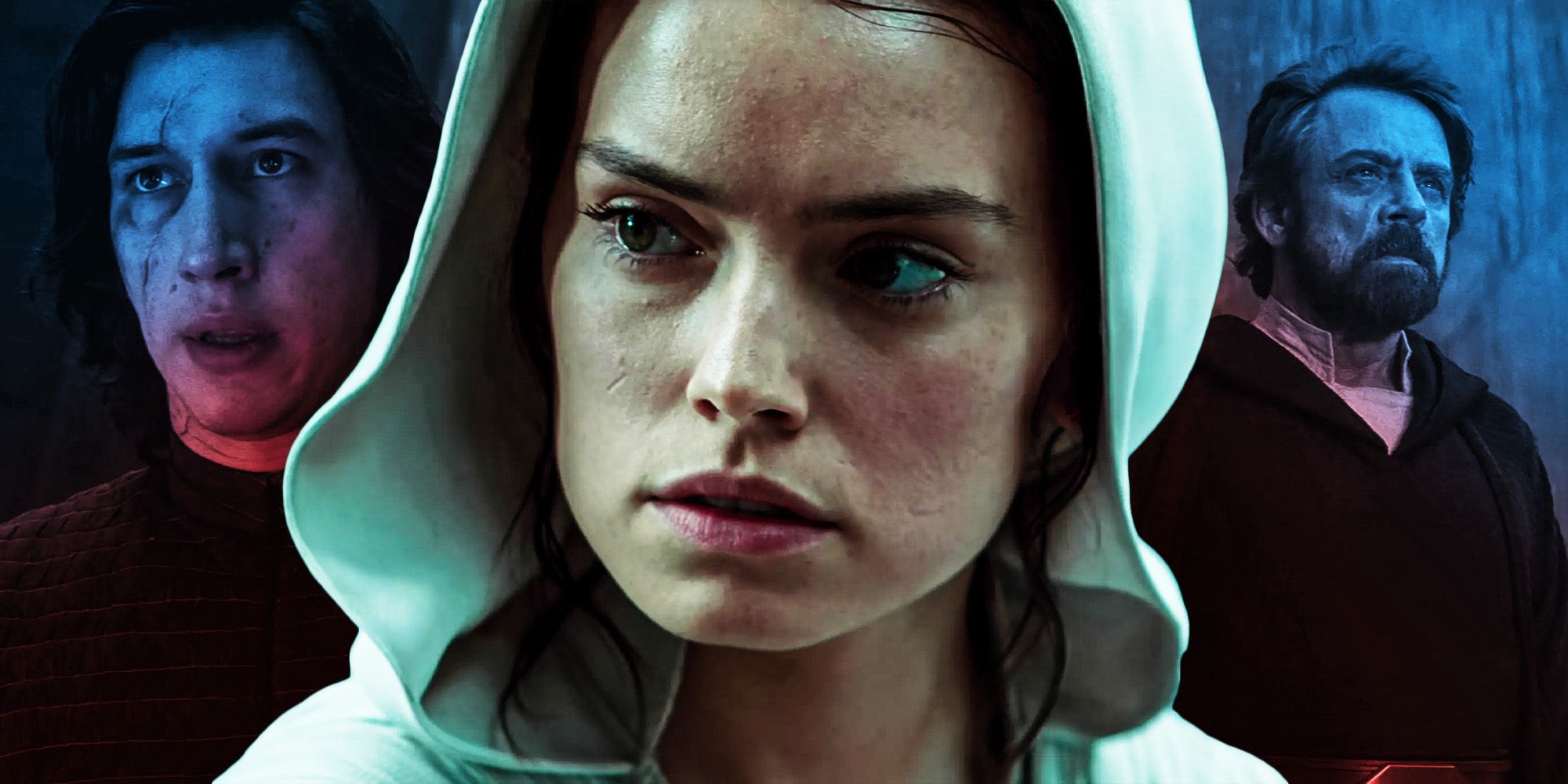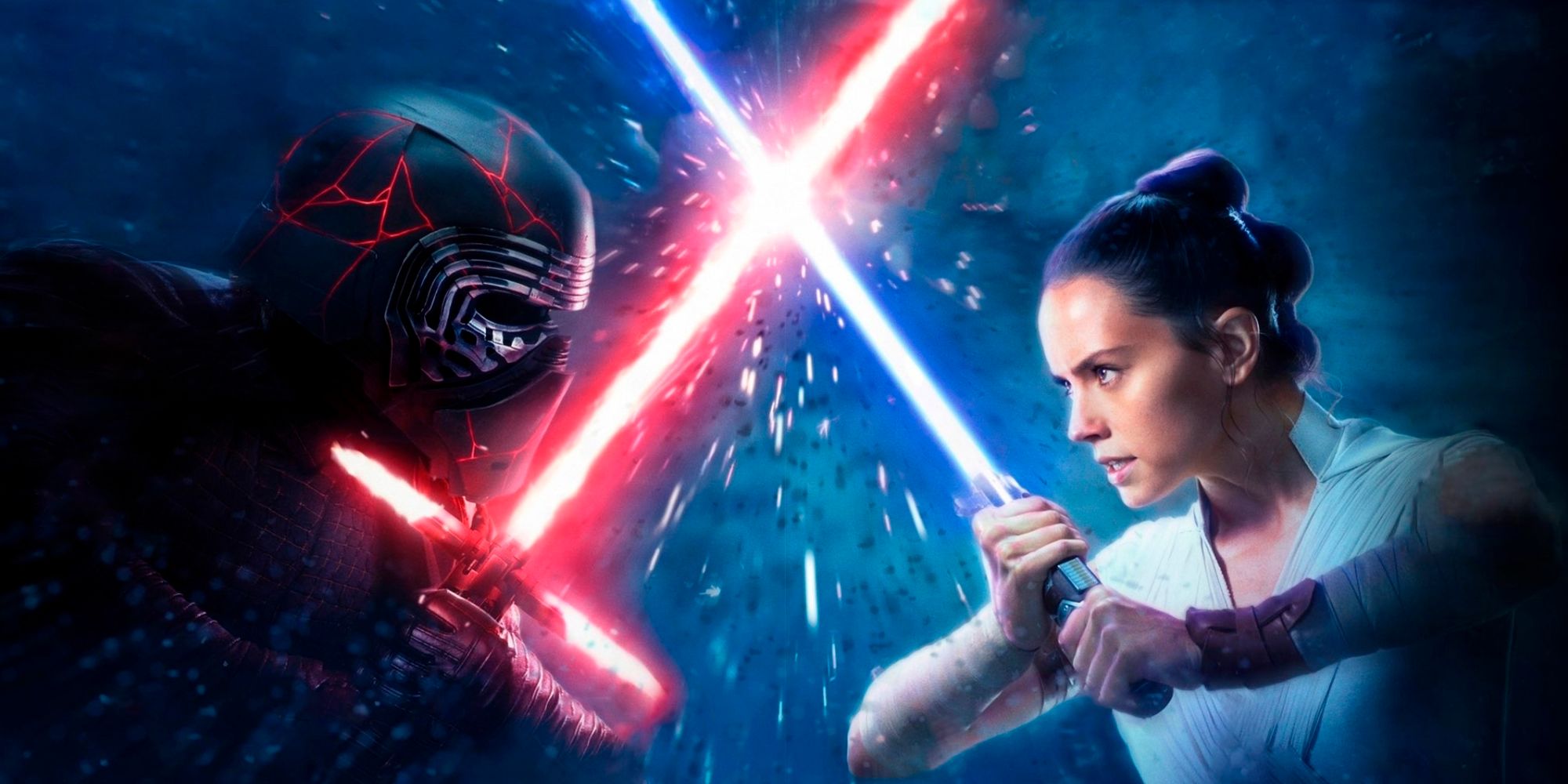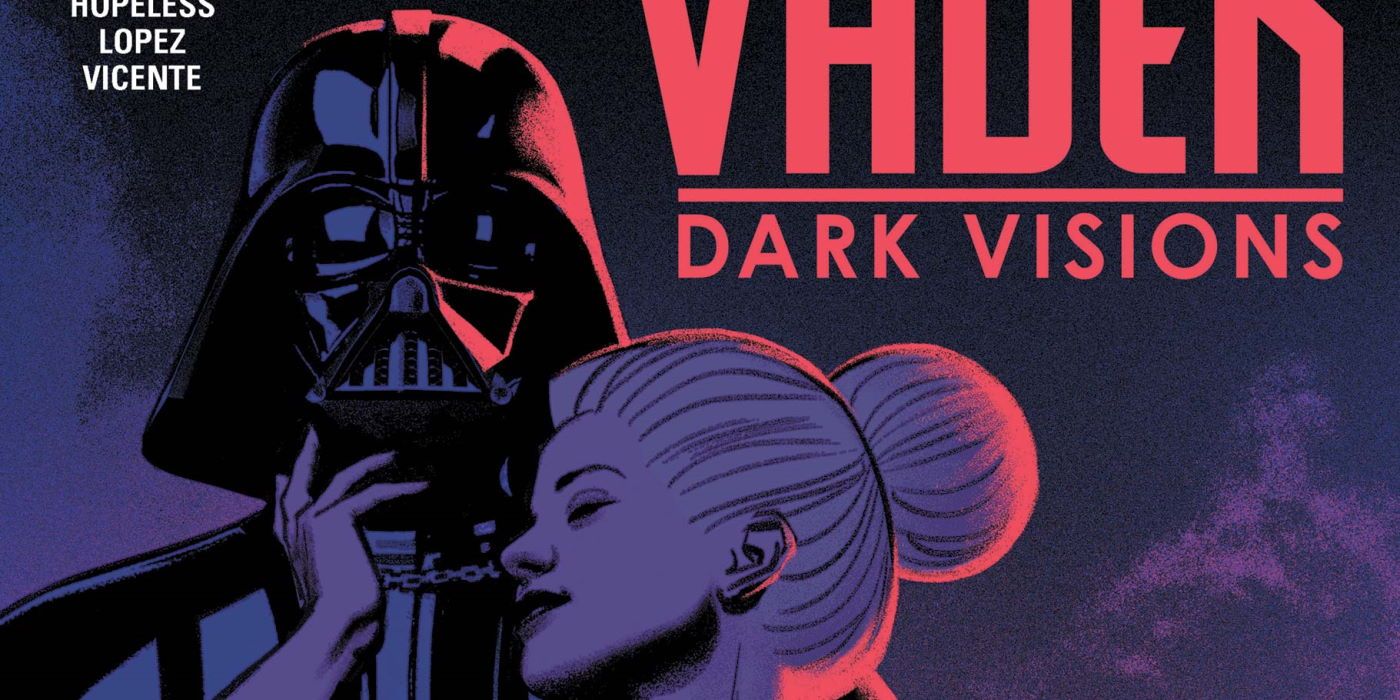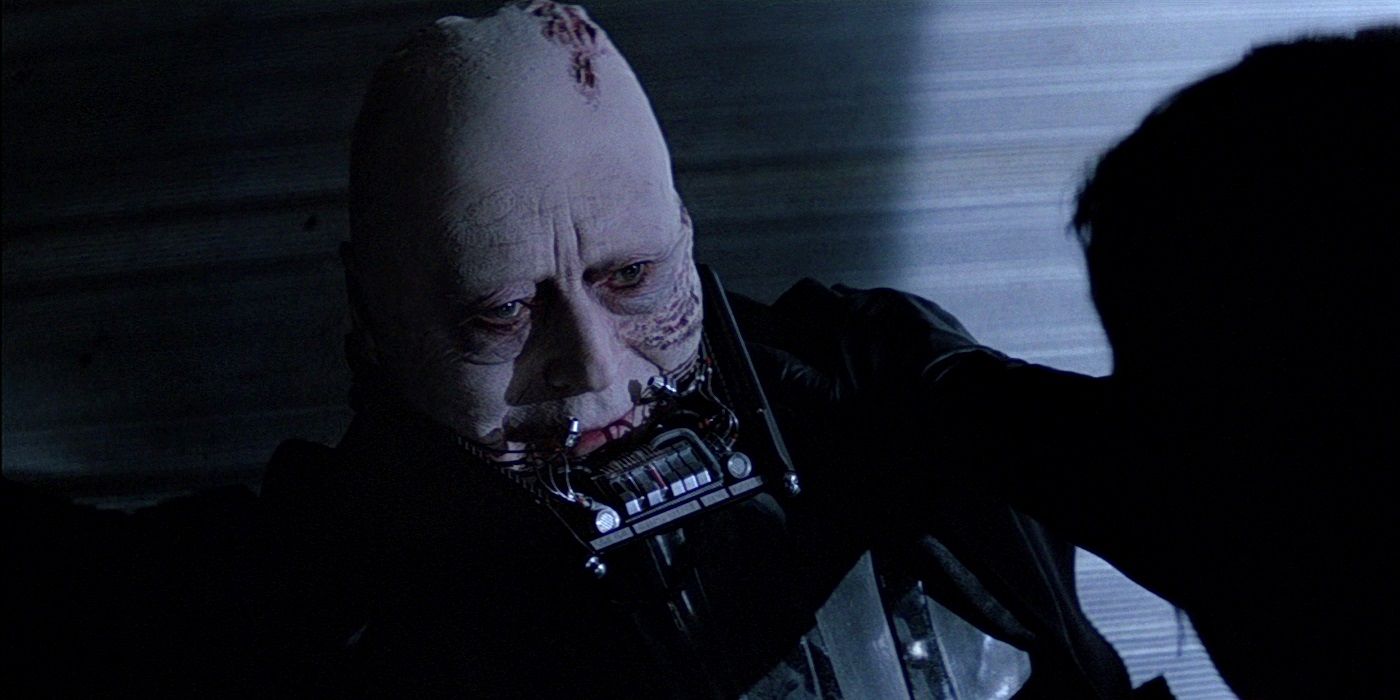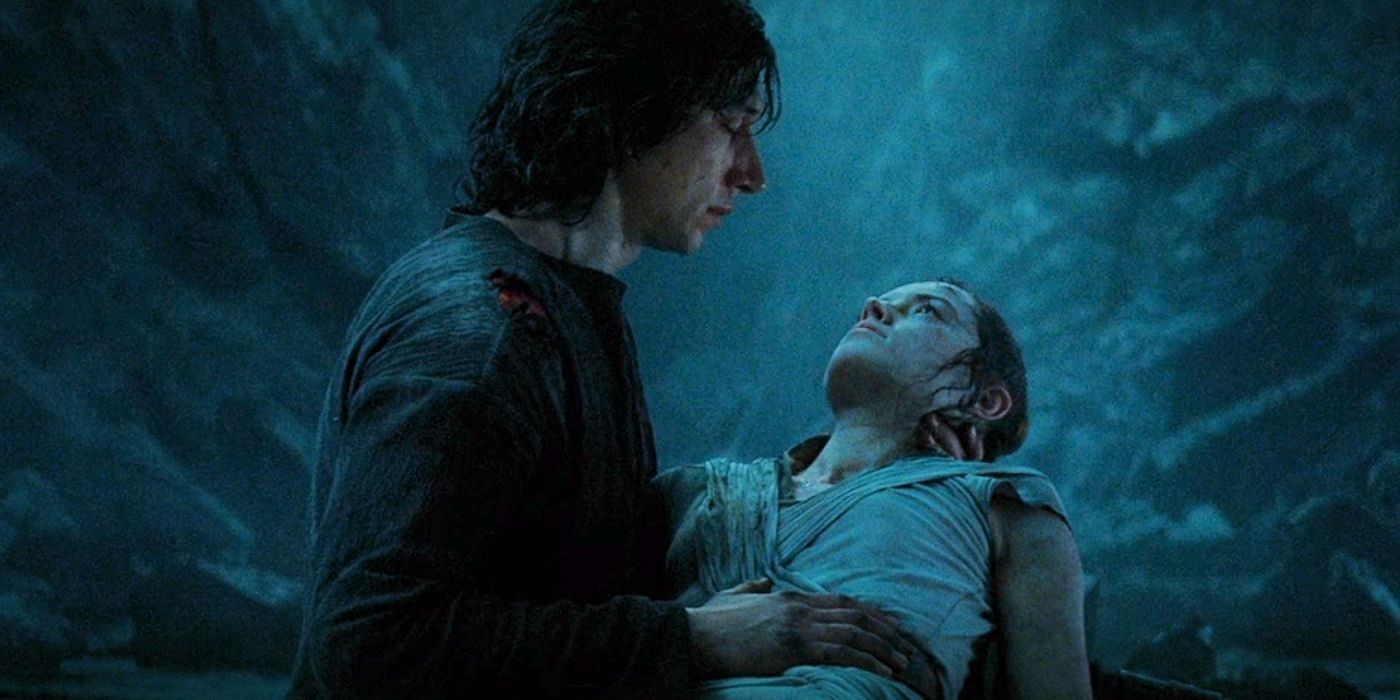Redemption hits different in the Star Wars sequels, and the tale of the Skywalker family suffers as a result. The Star Wars saga spans generations, striking a range of thematic notes on its epic journey. There's the importance of hope, the triumph of good over evil, the value of friendship, and what qualities to look for when buying droids from a local Jawa. But floating to the top of George Lucas' thematic ocean is redemption; the belief that it's never too late to do the right thing, and this message is woven throughout the story of Darth Vader in particular.
He might not be the brains of the operation (that honor falls to Emperor Palpatine), but Darth Vader is ostensibly the villain of the original Star Wars trilogy, chopping down civilians, torturing colleagues, and chopping off his own son's hand. Just when all looks lost in Return of the Jedi, Vader turns on his master, picking up Palpatine and throwing him down the Death Star II's reactor shaft, dying in the process. The Star Wars prequel trilogy would later detail how Anakin was corrupted by the dark side, revealing his innocent younger years as a child slave, and then a Jedi Mas...er, Knight. The Star Wars prequels were lambasted upon release, and although the trilogy is certainly flawed, Anakin's backstory unquestionably enhances his moment of redemption when rewatching Return of the Jedi.
But that theme of redemption adopts a much softer hue in the Star Wars sequels, both with the modern cast, and by retrospectively altering Darth Vader. Like the prequels before them, Disney's Star Wars sequels have attracted much criticism. Broadly speaking, The Force Awakens was deemed too Star Wars-y, The Last Jedi not Star Wars-y enough, and The Rise of Skywalker was Star Wars written by the Family Guy manatees. Whatever your stance on the most recent trilogy, it's impossible to ignore the wild difference in how Disney portrays redemption in the galaxy, far, far away.
No Disney Era Star Wars Characters Truly Fall To The Dark Side
Watching the George Lucas Star Wars movies (in any order but Machete), the fall of Anakin Skywalker is absolute. The prequel trilogy might encourage sympathy for him as a young man suffering immense grief, but Revenge of the Sith makes no attempt to justify or downplay his descent into evil. As Obi-Wan Kenobi proclaims, the young Jedi is "truly lost."
The Star Wars sequels employ a different approach, whereby no Skywalker character can be considered properly evil. Luke, for example, loses his optimism off-screen and becomes a hermit, watching the galaxy fall into ruin while drinking blue/green milk on an Irish cliff. But by the end of The Last Jedi, Luke has redeemed himself, giving his life to protect the Resistance from utter defeat. It's far from the fully-fledged Sith Luke Skywalker some fans were anticipating. Similarly, Rey flirts with the dark side without ever committing to a steady relationship. Kylo Ren senses villainy within her, and glimpses of evil Daisy Ridley peek out as she accidentally fires Force lightning, and when a vision reveals Sith Rey with her flip-out lightsaber and poor dental hygiene. Again, the Star Wars sequels skirt briskly around the notion of good characters becoming bad.
Then there's Kylo Ren - the de facto Darth Vader of the trilogy. Like his heavy-breathing grandfather, Kylo is a Skywalker Jedi who turns toward the dark side, commits a series of horrific crimes, switches teams, and gives his life to defeat Emperor Palpatine. But in Disney's Star Wars, Kylo Ren isn't all-the-way rotten, especially in comparison to Vader. Only in their final confrontation does Luke truly sense the "good" within his old man, and this (very) well-hidden virtue was invisible to everyone else. In contrast, the Star Wars sequel trilogy continuously reminds the audience that Kylo Ren's fall to the dark side is incomplete. Snoke, Leia, Han, Rey, and even Kylo himself maintain that the light of "Ben Solo" isn't extinguished entirely, and despite committing patricide, he's never "truly lost."
The Star Wars sequel trilogy also trumps-up the role of Supreme Leader Snoke in turning Kylo Ren bad - far more so than the classic movies did for Palpatine and Vader. Even in the prequels, where Palpatine's manipulations play out in full, Anakin's tragic circumstances never prevent him from being viewed as full, unadulterated baddie. He's responsible for his own crimes, and follows the path of fear, anger and suffering Yoda predicted, even if Palpatine is guiding him every step of the way. Again, the sequels are far more lenient towards Kylo Ren. No matter how many people the fallen Ben Solo kills, he's always depicted as a victim of Snoke, trapped and corrupted against his will. When Kylo finally comes good in The Rise of Skywalker, he's not so much turning toward the light like Darth Vader did, but merely embracing the person he's been all along.
Disney Is Trying To Make Darth Vader Less Evil
It's perhaps unsurprising that Disney's idea of a Star Wars villain is less outwardly despicable than George Lucas', given the Mouse House's reputation for family-friendly fare. But since taking the reins of the iconic sci-fi franchise, Disney has been retrospectively whitewashing Anakin Skywalker's bloody past. When Obi-Wan Kenobi and Anakin Skywalker face off in Revenge of the Sith, there's no question over who holds the moral high ground. Anakin killed his fellow Jedi, infamously murdered the temple's younglings, and always showed a tempestuous lust for power. The original Star Wars trilogy holds nothing back in making Darth Vader the most sinister of movie villains - partially because his eventual redemption wasn't always planned.
Alas, that was before Disney took steps to humanize the character. In the Star Wars sequels, Kylo Ren worships at the altar of his grandfather, honoring Vader's deformed helmet like a religious icon. Kylo's Vader obsession creates a divide between "Anakin Skywalker" and "Darth Vader," suggesting the two should be considered separate entities, and Anakin can't be blamed for Vader's sins. There was very little sense of this duality in the original or prequel Star Wars movies. Although Obi-Wan considers Anakin to be "dead," that says more about the Jedi hermit's guilt than accurately representing his padawan's state of mind. Right up until his moment of atonement, Anakin Skywalker is as much Darth Vader as Sheev Palpatine is Darth Sidious, or Count Dooku is Darth Tyranus.
Disney took an even more explicit step towards brightening Darth Vader's disposition in the canon Dark Visions comic book which, unbelievably, describes Darth Vader as a "mysterious antihero." Say that to any Star Wars fan between the years of 1977 and 2014, and they'd have broken out into tears or laughter. Maybe both. Disney seems to prefers the sound of "Anakin Skywalker, made some mistakes," rather than admitting that the black-clad figure on their merchandise ruthlessly stabbed his lightsaber through children and enslaved an entire galaxy.
The Sequel Trilogy Deprives Anakin Skywalker Of His Redemption
Anakin Skywalker's redemption arc is simple enough. An aspiring young Jedi gives in to his anger and sadness, and uses his immense power for evil, only to be redeemed by his son at the last. Not that you'd know this watching the Star Wars sequel trilogy. From The Force Awakens to The Rise of Skywalker, Disney essentially pretends that Anakin's turn back to the light never happened. Kylo Ren strives to be like his grandfather, but never acknowledges that Anakin actually destroyed the Empire in his final moments, and where Luke's successful attempt to redeem Vader should've been celebrated for decades after, it's hardly referenced at all. Ignoring Anakin Skywalker's redemption continues the false Disney narrative that he and Vader were two separate personalities - one good, one bad - rather than a single character who comes back from the ethical wilderness.
As well as glossing over Anakin's contribution to the Empire's downfall, The Rise of Skywalker also overwrites his greatest achievement by resurrecting Palpatine without explanation. Until 2019's final chapter of the Skywalker saga, Anakin was considered to have brought balance to the Force by killing the Sith Lord, but after Palpatine's return, it's not clear whether the prophecy was mistaken, or whether Anakin's "balance" was only destined to last a few short years before the misery began again. Anakin's Force ghost never manifests to address the issue, and only a brief line of dialogue from Hayden Christensen telling Rey to bring "balance... as I did" reminds the audience of his contribution.
Disney Made Star Wars Redemption Meaningless
If redemption was once a core theme of Star Wars movies, it certainly isn't under Disney's watchful eye. Darth Vader's Return of the Jedi ending proved so effective because the character was a true villain whom no one thought could be anything other than dastardly. Luke's ability to haul Vader back to the side of good embodies the sentiments of hope and determination that Star Wars holds so dear. But in order for that redemption to mean anything, a character must first fall far enough into depravity for them to need redeeming, and this is something Disney struggles to commit to. Luke Skywalker and Rey aren't redeemed because they were never truly bad, whereas Kylo Ren is never held accountable for his misdeeds. The Skywalker redemption story ends with a whimper.
In the case of Luke and Rey, neither character was necessarily supposed to turn dark, so it's Kylo Ren who suffers most from Disney's hesitance. In complete contradiction to how Darth Vader was introduced, the Star Wars sequels make excuses for Kylo Ren, playing off his villainy as the misguided impetuousness of youth, rather than a genuine fall into the dark side. He even gets to "kiss the girl" at the end. Everything from Snoke's influence, to Palpatine's manipulations, to waking up in the middle of the night and finding Luke Skywalker holding a lightsaber over his head is used to justify Kylo's bad behavior. And because Star Wars never holds Kylo accountable, his eventual moment of redemption during The Rise of Skywalker's final battle against Palpatine rings hollow compared to Darth Vader's victorious sacrifice in Return of the Jedi.
Even the past isn't safe. After three films building toward Anakin Skywalker's redemption, then three more providing dramatic context, the most important moment in Star Wars history appears to have been lost in the handover between George Lucas and Mickey Mouse, seemingly confirming that Disney will continue to push a softened vision of good and evil when it comes to the Skywalker clan.

